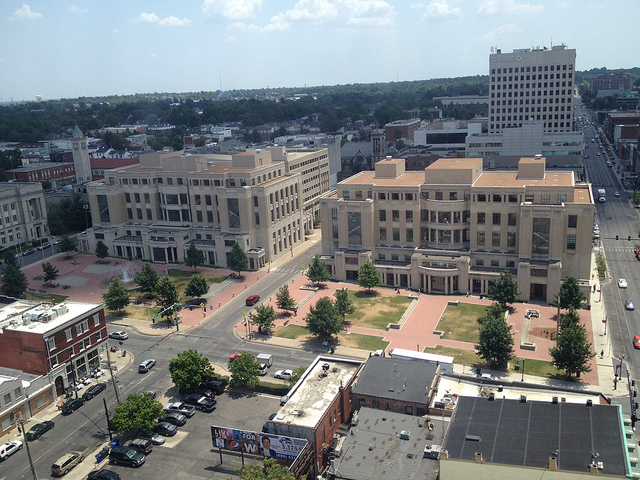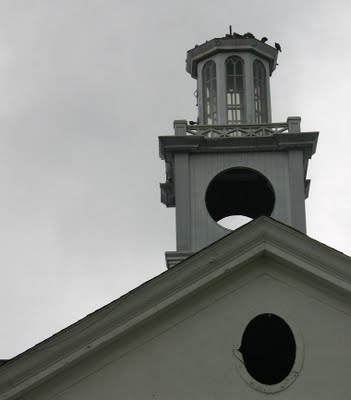 |
| Fayette County Courthouses – Lexington, Ky. |
Each year, the National Trust for Historic Preservation publishes a list of America’s Most Endangered Places. This year, Texas Courthouses made the list for the second time. Some background from the National Trust:
Texas courthouses helped establish a unique identity for each of the state’s counties, and 234 of the state’s 244 county-owned historic courthouses are still in active government use. Unfortunately, many – including some of the oldest and most architecturally distinguished – have fallen into disrepair due to inadequate funding and maintenance. In 1998, the National Trust named Texas courthouses to its list of America’s 11 Most Endangered Historic Places. The following year, the Texas legislature and Governor George W. Bush created the Texas Historic Courthouse Program. Administered by the Texas Historical Commission, this program has provided $247 million in matching grants to fully restore 62 historic courthouses and partially assist 21 more. While these results are impressive, more than 72 courthouses remain to be restored, including the Karnes County Courthouse. Continued state funding for the Texas Historic Courthouse Program is needed to assist preservation efforts across the state.
In Kentucky, we’ve taken a different approach citing judicial demands for increased space. As a result, preservation has not been at the forefront in all locales. Kentucky’s system has resulted in the construction of over 70 “judicial centers” since 1998.
 |
| Old Mercer Co. CH – Harrodsburg, Ky. (Photo: NRK) |
In Fayette County, two buildings on opposite sides of Short Street leave behind an old courthouse that has become a center for community museums. Most of the historic buildings that once stood on these blocks were destroyed prior to the decision to build the courthouse, but in several counties historic commercial structures are being razed to make way for judicial centers adjacent to or near the old courthouses (see Laurel County or Magoffin County as an example). In Mercer County, the historic courthouse has been demolished in favor of a replacement.
In Nelson County, the old courthouse at the historic center of Bardstown has been replaced by a judicial center on what is now the “main drag” far outside of the old city limits. In fact, the new Nelson County Judicial Center occupies the site of an old Wal-Mart. The same phenomenon can be seen in Johnson County. And while the ease of access to these judicial centers is convenient for jurors, attorneys, and judges, it can be the death knell for a small town’s downtown. While Bardstown is likely safe with its old courthouse now occupied by a welcome center in a well-visited community, Bardstown’s traffic doesn’t exist in each of Kentucky’s small-town county seats.
Consider that when the druggist closes for the big box drug store and the retail shops on Main Street close when Wal-Mart opens, what will be left of a downtown when the attorneys pack up shop and move closer to the ‘new’ courthouse?
When federal dollars are spent on a project, section 106 of the National Preservation Act requires each Federal agency involves to consider the impact on our national heritage. Kentucky’s courthouse projects have largely gone without Federal funds as noted in the State Historic Preservation Plan:
Historic county courthouses in Kentucky are now being replaced by large judicial centers or complexes. The construction of these facilities has led to the demolition of entire blocks of historic buildings in urban centers or downtowns. The judicial center projects do not usually involve the spending of federal funds; therefore, they do not require review by the Kentucky State Historic Preservation Office.
Suffice it to say, some of our old courthouses have been in need of repair or additional space. Two of the state’s handsomest courthouses – those in Hancock and Robertson Counties – have been largely preserved through the judicial center fervor of the past fourteen years. Hancock County’s courthouse, described as “singularly tranquil and substantial architectural presence,” desperately needed an update. As one commenter pointed out, the courtroom “now resembles the transporter room from Star Trek.” A new judicial center now stands across the street from the old Hancock County courthouse, which now faces an uncertain future. Meanwhile, the historic Robertson County courthouse in Mt. Olivet was incorporated into the new judicial center’s design.
Kentucky’s courthouses are vital to our collective history and our individual community’s uniqueness. In the words of former Governor Wallace G. Wilkinson, “Only when you have seen [all of the courthouses] can you get a true
appreciation for the history represented by these unique and individual
landmarks… Each is different from the other; distinctive in its architecture
and its history.” Former Governor Martha Layne Collins remarked that “one of the focal points of any community is the courthouse – the place
where so much of Kentucky’s rich and fascinating history has been written…”.
Tragically, our Kentucky courthouses are just as at-risk as those in Texas, but they are without the national preservationist’s limelight.
